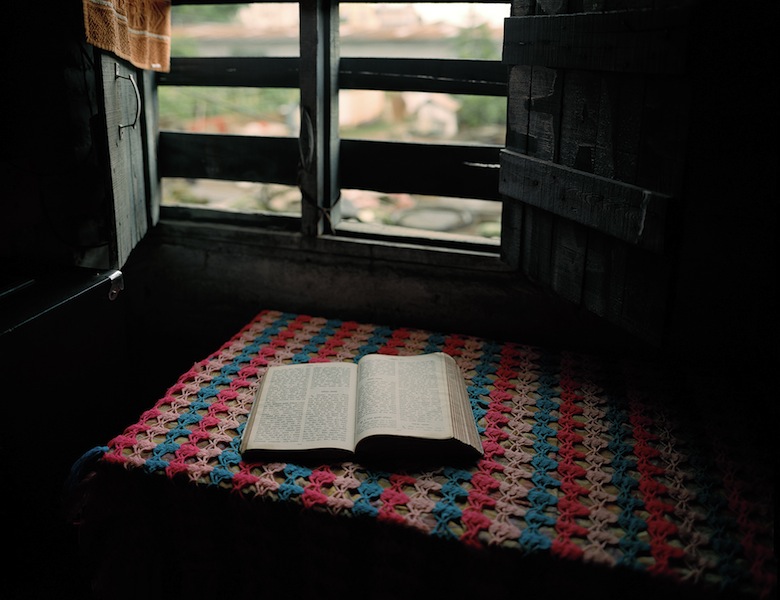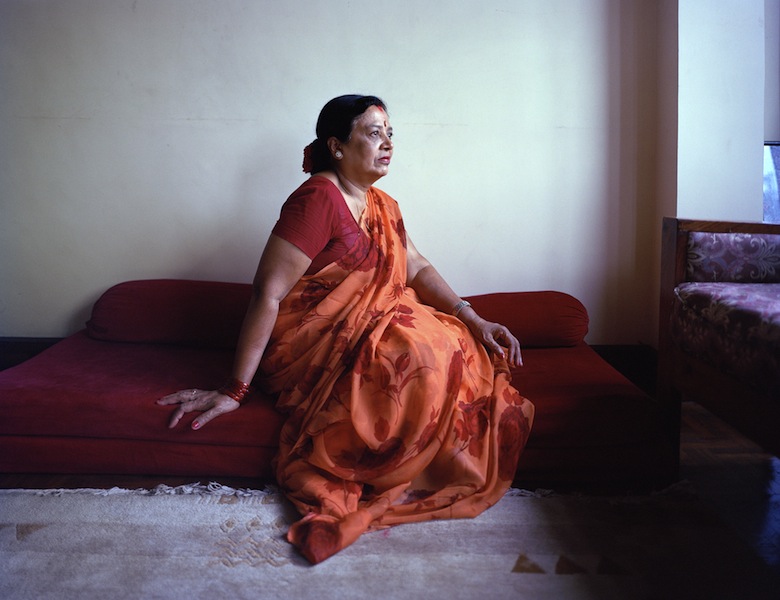It wasn’t until photographer Surendra Lawoti moved to Canada from the U.S. that he realized he was a transnational — someone whose sense of identity is tied to more than one country.
“I love Canada, but Nepal is also a strong part of who I am,” asserts Lawoti.
Born in Nepal, Lawoti has spent almost half his life in North America, arriving in the U.S. in 1994 at age 21 to pursue a degree in photography at Columbia College in Chicago and then an MFA at the Massachusetts College of Art and Design in Boston. The artist moved to Canada in 2008 and is now a permanent resident.
“In the U.S. I wasn’t allowed to fly back and forth to Nepal because of visa restrictions,” explains the Toronto-based artist. “When I moved here, I had the freedom to come and go.”
Travelling re-cemented his bond to his homeland and triggered a process of examination, culminating in a series of photographs that chronicle Nepal’s struggle to become a democracy. Lawoti’s first set of photos will be on display at Toronto Image Works from Dec. 3 to Jan. 31, 2014.
“It all starts with the word ‘transformation,'” says Lawoti. “There is a lot of energy, different movements happening in Nepal. The Maoists started the war more than 15 years ago and whether you like it or not, they were a catalyst for change.”
Called “The People’s War” by the Maoists, the civil unrest lasted 10 years, ending in 2006 but leaving Nepal in a state of instability as it strives to disentangle itself from its monarchist history while also grappling with the aftermath of a brutal war that resulted in more than 15,000 dead.
“Living over here, I could see a lot of things were changing socially and politically over there.”
Curious, Lawoti headed to the capital, Kathmandu, in the summer of 2012 to begin his work.
“I wasn’t sure what I was looking for but I concentrated on the idea of transformation,” he recalls. “I only had a month and since it’s hard to travel around the country, I kept to the city. As I photographed and edited the work, I realized it was about social change.”
Different cultures subjugated, Hindu-ized
Lawoti’s photos concentrate on activists and members of minority groups, including gay and transgender people.
“We had one king who conquered all these small nations, and all these different cultures were subjugated and Hindu-ized, so to speak. That became the dominant language and religion, and women, too, became marginalized.”
The main political class are Hindus — specifically, Hindus from the highest caste. However, about 5 per cent of Nepalese are Muslim, 15 per cent are Buddhists, not to mention Christians, Sufis and Jain adherents exist, too. According to the World Bank, about one-third of Nepalis live under the poverty line and almost half of those are Dalits — the lowest Hindu caste.
The portraits include many of the marginalized such as the Madheshi people from the southern flat lands that border India.
“Madheshis look different from the typical majority hill people of Nepal,” notes Lawoti. “So, they are often discriminated against because it’s easy to pick them out.”
As the returning “son,” the photographer says he also learned a lot.
“Minority groups have made a huge difference in the democratic process. There are regional parties now that can sway national politics,” says Lawoti. “I’ve also learned how hard it is to establish a democratic state. There’s a lot of ground to cover… Nepal can also learn from Canada and its form of federalism.”
‘What is Nepali?’
The Nepalese just voted, again, in November, for their Constituent Assembly. The turnout was estimated to be about 70 per cent (that compares to the 61 per cent of Canadians who cast their ballot in the last federal election). The Assembly is now tasked with writing the constitution with a deadline of two years — the time period Lawoti will also be following to continue his project.
It all harkens back to his transnationalism — having one foot in Canada and the other in Nepal.
“One of the biggest changes in Nepal that I’ve seen is more inclusiveness towards minorities,” says Lawoti. “And, you look at Canada and it is way ahead in terms of multiculturalism and equality. Nepal can learn from that.”
One of Lawoti’s favourite photos is that of a Bible that belongs to a young woman, Sabita. The Bible is shot lying next to a window — photographed in the bedroom that Sabita shares with her parents — who are Hindu and live in a squatter’s tenement in the middle of Kathmandu.

Sabita Poudel’s Bible, Banshighat, one of 14 squatter settlements.
“It speaks about the complexity of Nepal. Recently, we have been discussing ‘What is Nepali?’ and most people only spoke of one type of nationality — that it’s a Hindu state,” explains Lawoti.
“Sabita converted to Christianity when she was in her late teens, she’s about 24 years old right now. The picture speaks to Nepal’s many levels: class, religion, culture and also, marginalization. It’s about the world out there and the world inside.”
‘This Country of Yours’ opens to the public Dec. 3 at Toronto Image Works, 80 Spadina Street. A reception is on Dec. 4. Surendra Lawoti will be doing an artist talk at the gallery on Jan. 18, 2014.
His works can be viewed on his website as well.
June Chua is a Toronto-based journalist who regularly writes about the arts for rabble.ca.
Photos courtesy of Surendra Lawoti.




